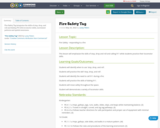
Fire Safety Tag integrates the skills of stop, drop, and roll and dialing 911 with locomotor skills, movement patterns and spatial awareness.
- Subject:
- Education
- Material Type:
- Lesson
- Lesson Plan
- Date Added:
- 05/26/2022
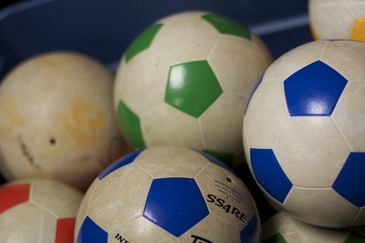

Fire Safety Tag integrates the skills of stop, drop, and roll and dialing 911 with locomotor skills, movement patterns and spatial awareness.
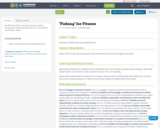
Fun Fitness Activity to introduce 4 ways to build a healthy body and healthy brain:
Exercise - Drink Water - Eat Healthy - Sleep
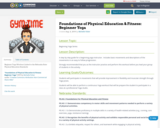
Beginner Yoga Workout
Linked to the Nebraska State Physical Education Standards
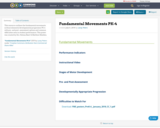
This resource outlines the fundamental movements (critical elements) developmental progression PK-4 with pre- and post- assessment options and common difficulties seen in student performance. This poster was created by Drs. Helena Baert & Matthew Madden.
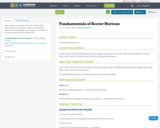
This template is meant to be a guide for Nebraska Physical Education Teachers when creating digital online lessons. Headings and/or topics not included in the lesson plan should be marked N/A.

This document contains links to park maps and trails throughout Washington state.

Resource suggestions to explore and consider as a way to support your family learning during school closures.

Short Description:
Quiz questions that accompany the text are available for faculty and instructors. Request access by providing your credentials and contacting us at learnlib@umn.edu.
Word Count: 19514
(Note: This resource's metadata has been created automatically by reformatting and/or combining the information that the author initially provided as part of a bulk import process.)

In this lesson, students will have the opportunity to learn about one such game, which is often called double ball in English. Double ball is a team sport that is similar to the contemporary game of lacrosse, in that it involves multiple players using long sticks and a ball, with the purpose—in most versions—of getting the ball across a goal line or through some sort of target. Many tribes, including several in Oregon, played a version of double ball and continue to do so today.While focused on physical education, this lesson reinforces two important concepts that are woven throughout this curriculum. First, students will learn that while there are many similarities across tribal nations and Indigenous communities— including some of the games they play—Native American people are far from homogeneous and in fact represent a rich diversity of unique cultures. Second, students will be encouraged to think about how the specific natural environment in which a given tribe lived—its ancestral territory— shaped its identity and culture in both large and small ways. Understanding this strong connection to place is essential to understanding and respecting Native American cultures in Oregon and across North America, past and present.

Tribal nations and Indigenous communities throughout North America have always enjoyed games and athletic activities that provide entertainment, teach skills of physical and mental endurance, promote tribal values such as teamwork and fairness, and allow individuals and teams to challenge themselves in competition. These games and activities range from the simple hand (or“stick”) game that dates back thousands of years to the modern-day Indian Relay Races that oftendraw large crowds. Even in the pre-contact era there were some similarities in the games playedby tribes in a given region or even in completely different parts of the country, but there were also many variations in the rules, materials, and methods of play. In this lesson, students will learn how to play one version of the hand game and will hear about some of the variations in the playing materials and rules used by different tribes in Oregon. Students will learn to take cues from opponents to identify the hand that holds the chosen item.

In this video segment adapted from NOVA, follow novice runners as they train for a marathon, and discover how quickly the body responds to regular aerobic exercise.
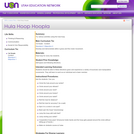
This lesson includes various activities using the hula hoop.

in a Canadian Context
Short Description:
This textbook serves as an introduction to nutrition for undergraduate students and is the OER textbook for the SPSC 1192 Topics in Human Nutrition course at Douglas College in New Westminster, BC, Canada. The book covers basic concepts in human nutrition, key information about essential nutrients and how the scientific method should be used to make nutrition-related decisions.
Word Count: 110639
(Note: This resource's metadata has been created automatically by reformatting and/or combining the information that the author initially provided as part of a bulk import process.)

To have a plan for students to learn about why we have a physical education class and the purpose of it

This informs students on the effects of physical activity and some examples of exercises.
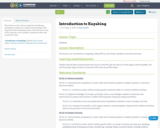
This lesson is to be used as a guide for introducing kayaking to students in a school setting. Students will learn the 5 basic kayaking strokes, how and why to wear a PFD, and how to use a paddle to maneuver their boat around the water.

Spikeball is a game that can be played on beaches, college campuses, city parks, anywhere you have room! Here we will practice some basic ball handling techniques and cooperative activity to build the skills necessary to play Spikeball.
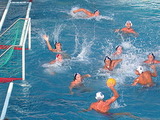
This module will provide a brief introduction to the background and rules of the sport of water polo

This is an introductory jumproping lesson for grades K-2. It includes a breakdown of what jumproping is, an individual practice, as well as a group game. This lesson focuses on the benefits of jumproping and why it is a good exercise.